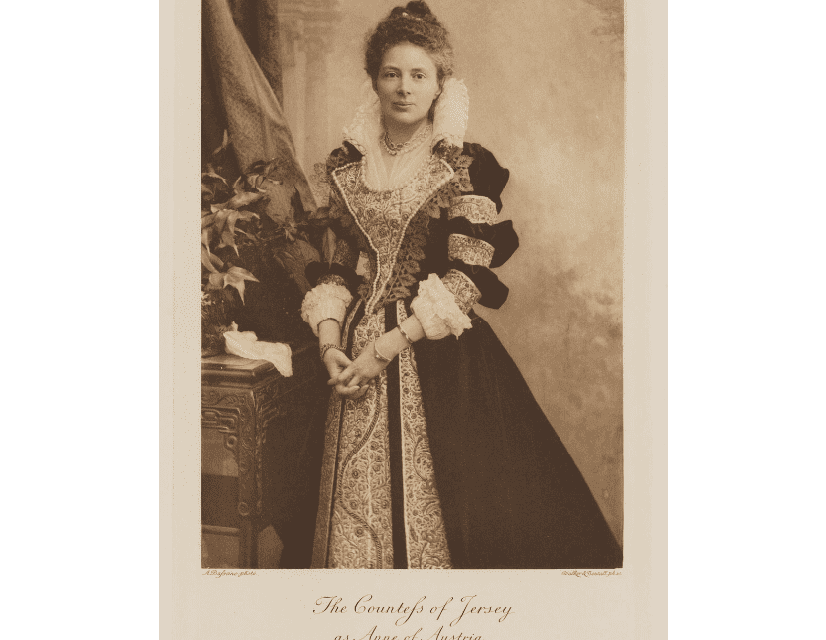

In the summer of 1897, the Duke and Duchess of Devonshire hosted a Fancy Dress Ball to celebrate Queen Victoria’s Diamond Jubilee.
“Of all the private entertainments for which the Jubilee has provided the occasion none is comparable with the magnificent fancy dress ball given last night at Devonshire-house by the Duke and Duchess of Devonshire,” read the report in The Times, July 3, 1897.
Attendance was strictly by invitation only but it is fair to say that anyone who was anyone was on the guest list. Most of the British Royal family were there, including the Prince of Wales in the costume of a Grand Master of the Knights Hospitallers of Malta accompanied by his wife the Princess of Wales as Queen Marguerite de Valois. Their son, the Duke of York, the future King George V, was dressed as the Earl of Cumberland while his wife, the Duchess of York, later Queen Mary, wore a costume as a Lady of the Court of Marguerite de Valois in deference to her mother in law.
The costumes were prescribed, guests couldn’t turn up wearing just anything. There were seven categories from which to choose; the Elizabethan Court, the Louis XV and XVI Court, the Court of Maria Theresa and the Court of the Empress Catherine II of Russia, plus the Oriental, the Italian Procession and the 17th century.
“Never in our time has so much attention been paid to old family pictures, never have the masterpieces of portraiture in the National Gallery been so carefully studied, while for weeks past the print-room at the British Museum, commonly given up to quiet students, has been invaded by smart ladies and gentlemen anxious to search the prints and drawings of the 16th, 17th, and 18th centuries for something in which they could obey the Duchess’s summons to appear “in an allegorical, or historical costume dated earlier than 1820,” continued the report in The Times.
Invitations were for half past ten when guests were greeted by the Duke of Devonshire dressed as Hapsburg Emperor Charles V (after the painting by Titian) with the Duchess dressed as Zenobia, the 3rd Century Queen of the Palmyrene Empire in Syria. At about 11 o’clock the National Anthem announced the arrival of the Royal party who took their seats on the dais as the processions began.
It was a big night for the Villiers family too, who turned out en force. Constance Stanley, Countess of Derby, the eldest daughter of George, 4th Earl of Clarendon was dressed as the Duchess of Orleans and wore a rich blue silk gown stamped with purple velvet and trimmed with antique lace edged with gold. A train of brocaded velvet to match the bodice was draped down one side with pink satin, and secured with diamond ornaments. Her younger sisters Alice, Countess of Lathom was dressed as Catherine of Aragon while Emily Theresa, Lady Ampthill came dressed as the Princess de Lamballe.
Lady Isobel Stanley, the daughter of the Countess of Derby was dressed in the hunting costume of the Louis XVI period while her cousin Lady Edith Villiers came as Lady Melbourne (after a painting by Cosway).
Other Villiers family members included Margaret Elizabeth Child Villiers, wife of the 7th Earl of Jersey dressed as Anne of Austria and her daughter Lady Margaret Child Villiers as Madame Henriette Duchess d’Orleans.
So, why am I so enthusiastic about these ladies – well, of course there is a Lydiard House and St. John family connection, although it does involve quite a climb up the family tree?
The three sisters trace their Clarendon ancestry back to Thomas Villiers, 1st Earl of Clarendon, the second son of William Villiers, 2nd Earl of Jersey. Now the ascent becomes a little easier. Edward Villiers, 1st Earl of Jersey was the son of Sir Edward Villiers, the fourth son of Sir Edward Villiers and his wife Barbara St. John. Barbara appears with her five sisters on the St. John polyptych in St. Mary’s Church, Lydiard Tregoze, commissioned by her brother Sir John St. John 1st Baronet. Phew, you can take a breath now!
The Devonshire House Fancy Dress Ball has gone down in the annals of history, helped by the survival of 286 photogravure reproductions produced by Walker and Boutall. Today these images are available to view online at the National Portrait Gallery website. I’m going back for another look to see how many other ladies I can find descended from the St. John family.
If you would like to know more about Barbara St. John and her sisters you might like to read The Ladies of Lydiard.
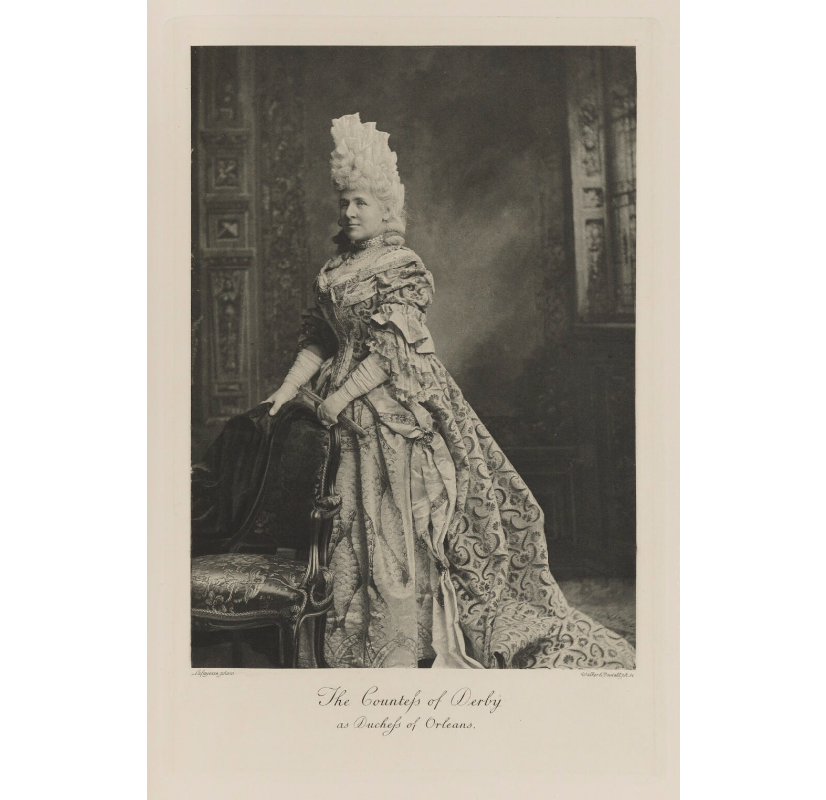
Constance Stanley, the Countess of Derby
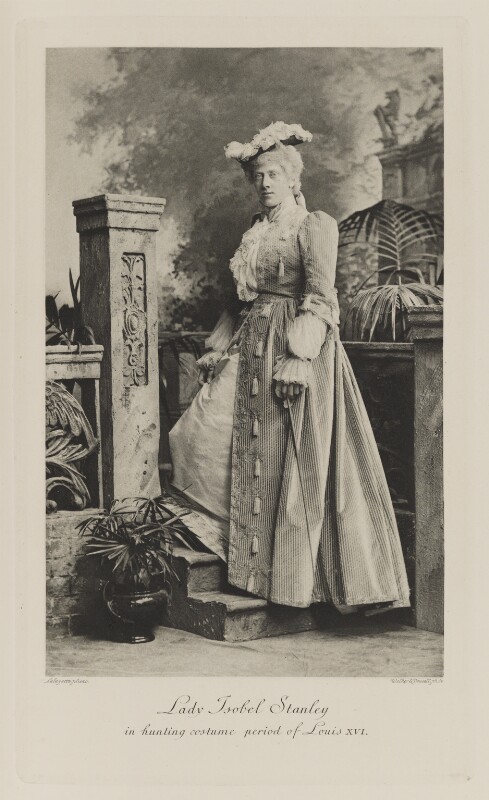
Lady Isobel Stanley
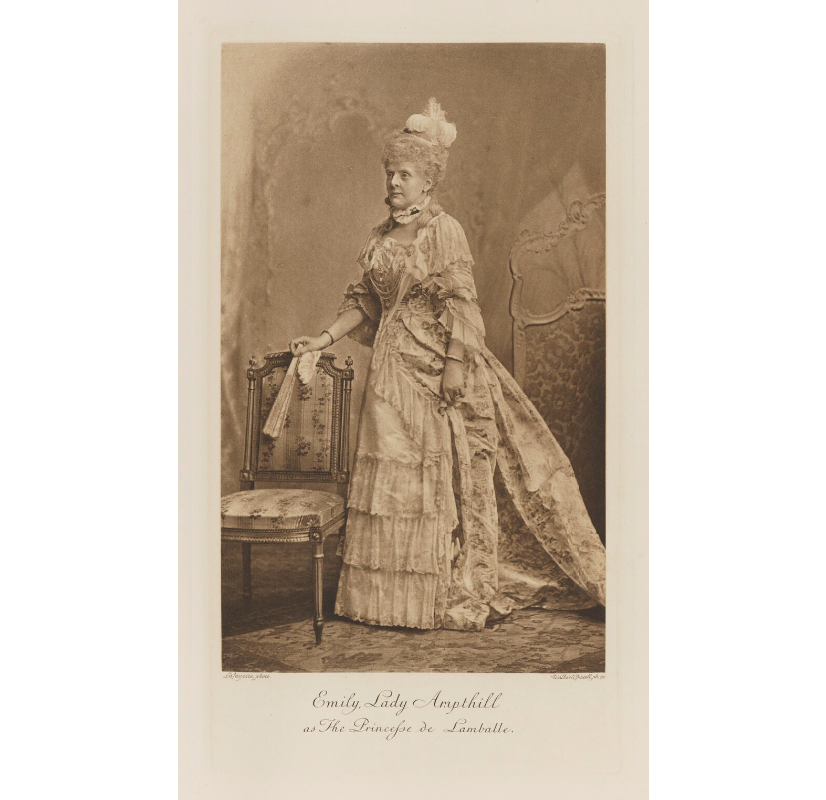
Emily Theresa, Lady Ampthill
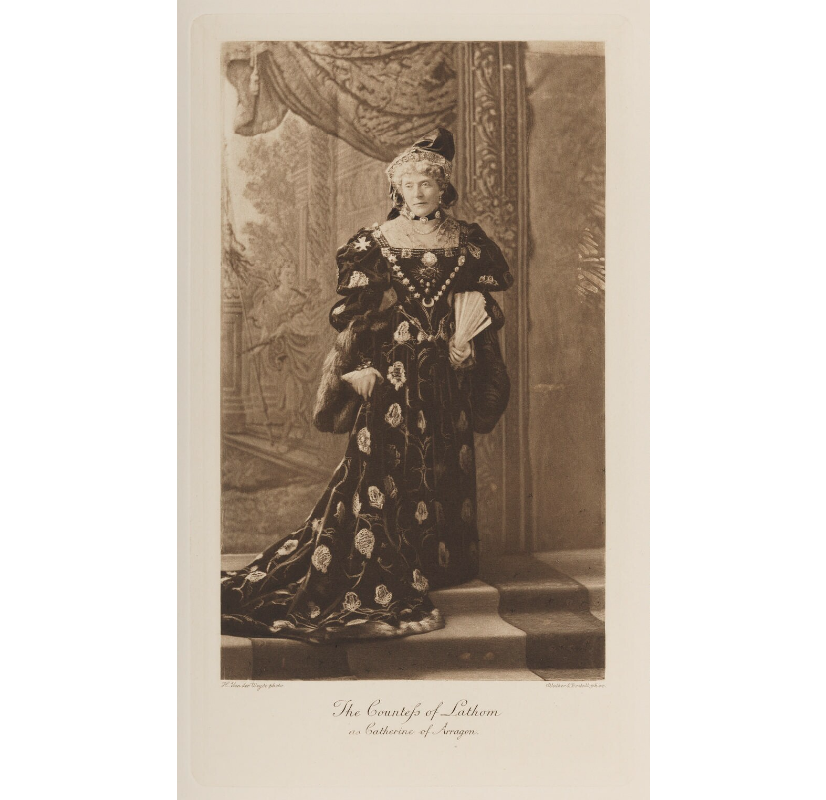
Alice, Countess of Lathom
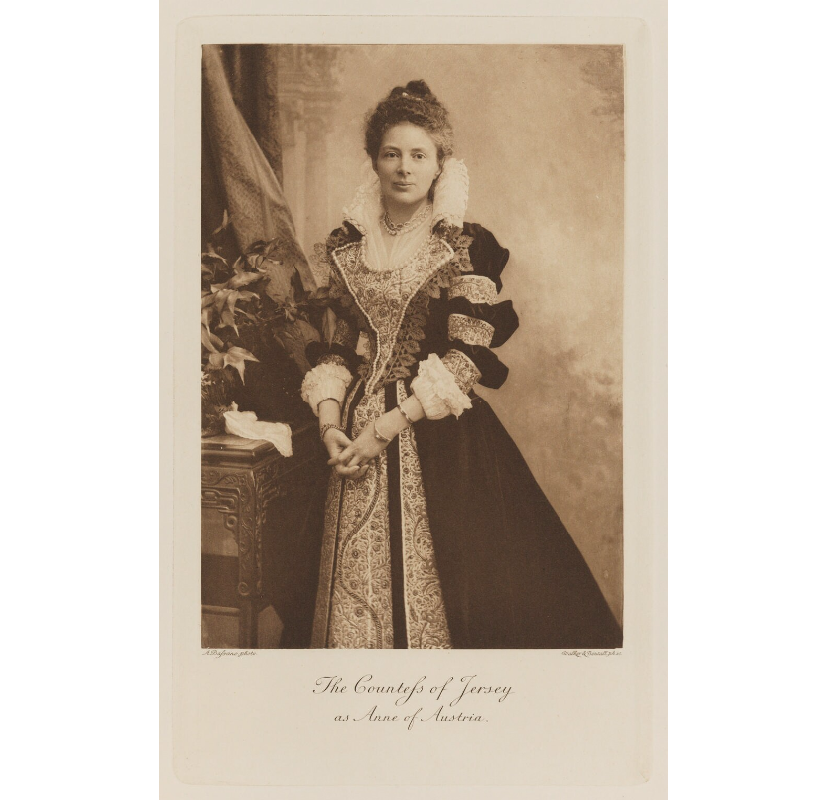
Margaret Elizabeth, Countess of Jersey
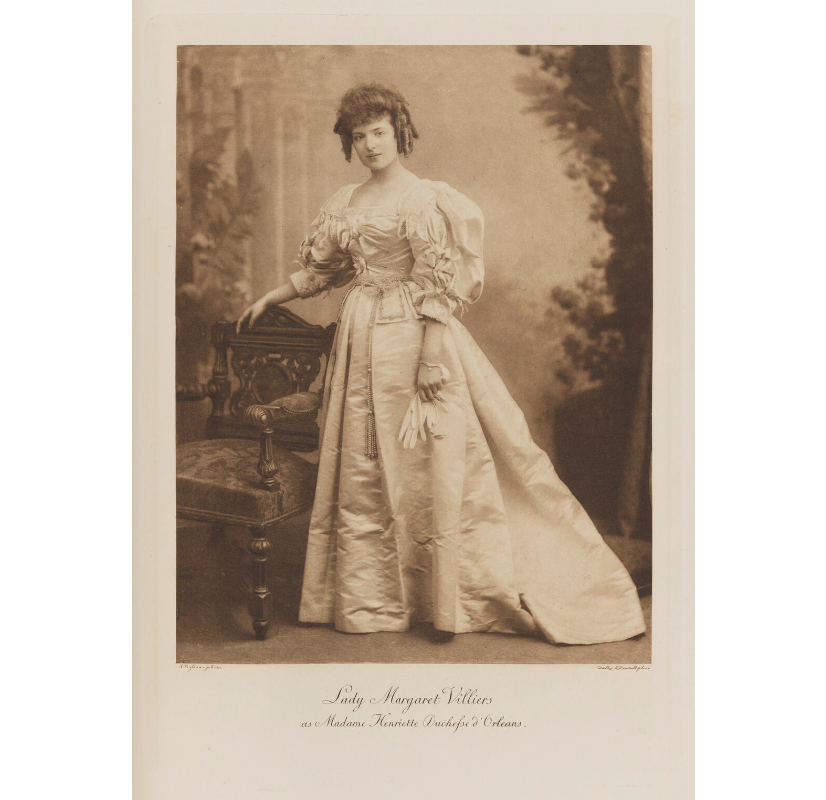
Lady Margaret Child Villiers
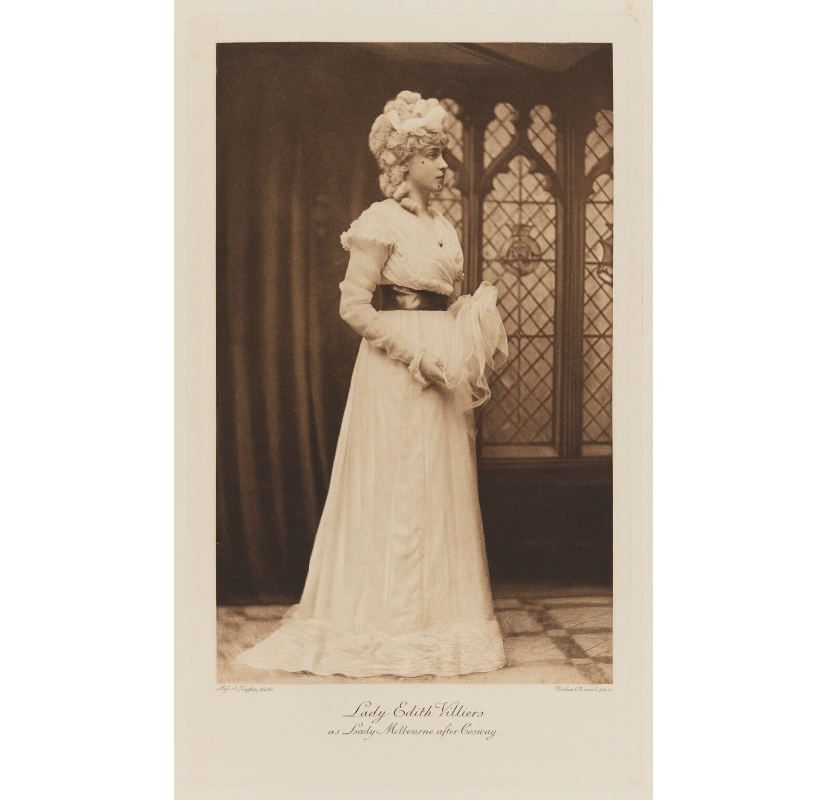
Lady Edith Villiers
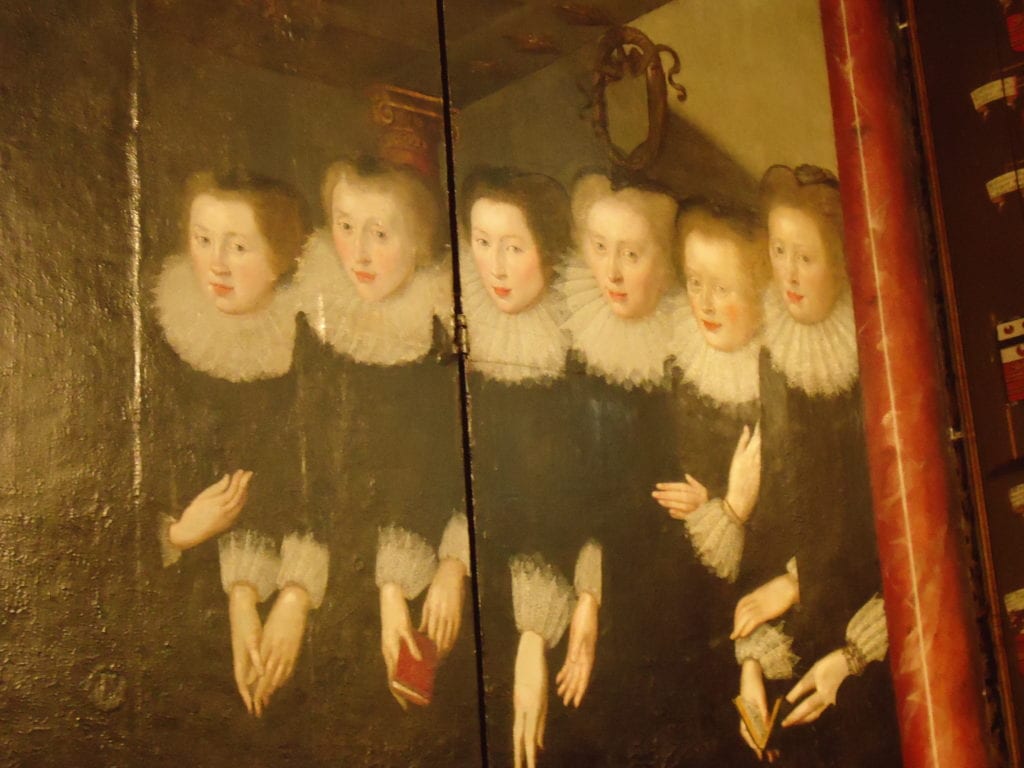
The Six St. John sisters – Barbara is second from the left.